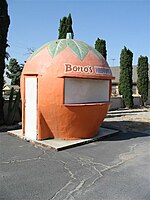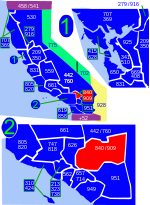Kaiser Steel was a steel company and integrated steel mill near Fontana, California. Industrialist Henry J. Kaiser founded the company on December 1, 1941, and workers fired up the plant's first blast furnace, named "Bess No. 1" after Kaiser's wife, on December 30, 1942. Then on August 1943, the plant would produce its first steel plate for the Pacific Coast shipbuilding industry amid World War II.
Resources for early production came from various sources, and the Fontana site presented some logistical disadvantages. However, the plant continued to grow in capacity after the war, adding more furnaces and metal rollers while also introducing new processes. The company would also eventually develop its own mines and railroad so that the steel mill formed a node in Kaiser's larger, vertically-integrated business: materials sourced from Kaiser-owned mines would yield steel for Kaiser industries (among other customers), and company workers would even receive medical care through Kaiser Permanente, an affiliated health maintenance organization.
The Korean War led to another surge in production, and by the 1950s, Kaiser Steel and competitor Geneva Steel, a U.S. Steel-owned plant near Salt Lake City, Utah, had captured most of the Pacific Coast steel market. In the 1960s and 1970s though, Japanese and Korean steelmakers would begin out-competing the mill; despite attempts to adapt, the company would enter a steady decline until the mill closed in December 1983. Since then, much of the land in Fontana was sold to create the Auto Club Speedway, while a small portion of the plant still performs rolling operations under different ownership as California Steel Industries.







